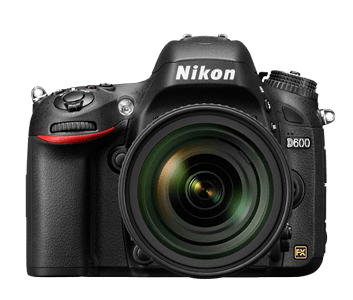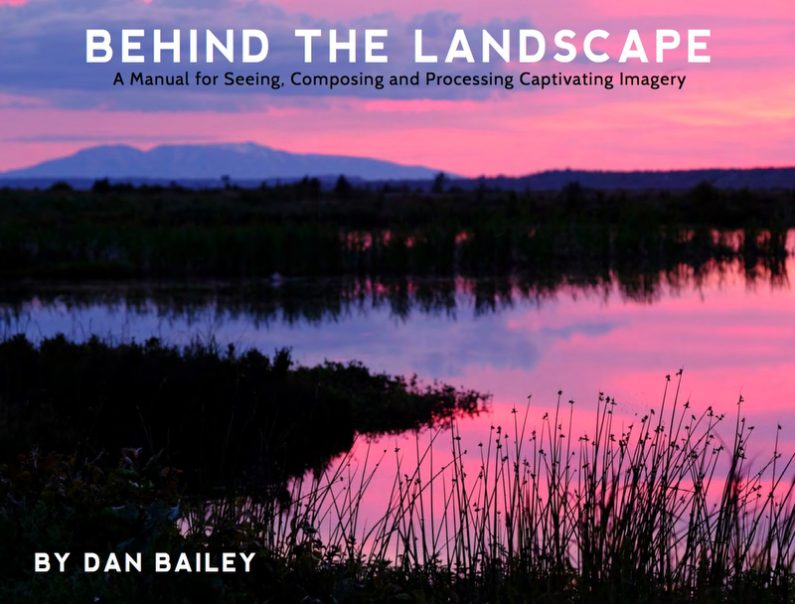The brand new Nikon D600 hits the stores today. In fact, B&H Photo is offering free shipping on D600 bodies to US customers who don’t happen to live in the remote, cold frontier town known as Alaska, or the faraway tropical paradise of Hawaii. If you’ve been dreaming and waiting with baited breath for this camera, order today and you might even have it by the weekend.
There’s no question that the D600 is an awesome camera. With a 24MP full frame sensor and Nikon’s EXPEED 3 Image Processor, which is the same found on both the D4 and D800, the new D600 will produce fantastic image files that have excellent quality and rich tonal depth.
However, for the price of a D600, you could buy a pair of D7000 bodies ($996 right now), and still have change left over for an extra battery and memory card, or the Nikon 35mm f/1.8G DX. (Effectively a nifty fifty on the DX bodies.)
Or, you could buy just one D7000 and have enough money left over for, oh, I don’t know… how about a thousand dollar lens? “I’ll take the 105 f/2.8G ED-IF VR for $900, Alex.” Or a round trip plane ticket to Alaska? Mmmmm…. glaciers and bush planes…!” How about a huge stack of promo cards that you can send out to prospective clients. “Sure, we’ll hire you, Mr. Bailey, we LOVE your work!!”
So, getting down to the meat of the issue, you want to know if the D600 is worth the big jump in price and if you should upgrade. Should you buy the shiny new D600 or stick with the less expensive, but older D7000. Let’s review features and compare both cameras.
Full frame vs. DX?
This largely boils down to the issue of whether you want a full frame FX sensor or a DX sensor. What’s the difference? Generally, FX sensors are much more expensive to produce, but they give you higher quality images than DX sensors. Much of this has to do with pixel size. FX sensors are bigger, and in order to spread the same number of pixels across a larger surface area, pixel size is increased.
Larger pixels have better light gathering ability, and thus have much more sensitivity in lower light conditions. This means that FX sensors can produce higher dynamic range imagery that has lower noise at higher ISO settings. Result: FX gives you much better high ISO performance.
However, you have to use good lenses with FX sensors or you’ll see a noticeable drop in sharpness and possible vignetting at the edges. DX cameras let you get away with less expensive budget lenses, but FX cameras let you use your older Nikon lenses with no change in the angle of view.
Image Quality
Along with the differences in sensor and pixel size, the D600 (24.3MP) uses Nikon’s newest EXPEED 3 Image Processor. The D7000 (16.2MP) uses the older EXPEED 2 processor (same on the D700), and although it produces excellent quality images that have wide tonal range and depth, the D600 is simply better.
Is it night and day? Yes. The D600 has been scored WAY higher than the D7000 in DxO image evaluation tests. Will it make all the difference in your photography? No, probably not, unless you like to shoot in low light. There’s no question that the D7000 shoots great looking photos, but if you want the maximum quality from your imagery, you’ll get better performance with the D600 than you will with the D7000.
Lenses
This will be biggest concern for many photographers. If you’re going from DX to FX, you may need to upgrade your lenses. DX lenses simply won’t give you the quality that you need to take advantage of an FX sensor, and if you get a full frame body, you’ll want full frame lenses. Besides, you should never skimp on lenses anyway. No matter what camera you use, good lenses on a cheap body will ALWAYS give you better images than a cheap lens on a good body. Remember that mantra. Forever.
If you’re coming from film and still have some older Nikon glass, rest assured, you can use them all on the D600, especially those wide angles! In fact, the “D” series lenses work great on full frame sensor cameras.
Flash
Niether the D600 nor the D7000 have a PC socket for flash sync cords. (You can use the $20 Nikon AS-15 adaptor, which turns your hot shoe into a PC socket.) They both have pop-up flashes that can act as commanders and control up to two groups of Speedlights, but whereas the D600 only syncs to 1/200 sec, the D7000 syncs to 1/250. No one is sure why Nikon didn’t do this on the D600, but in comparison, the just announced Canon 6D only syncs to 1/180 sec.
If you shoot sports or outside in bright sun a lot with flash, the D7000 will perform just a little better in this department, but keep in mind that with its vastly improved dynamic range and larger sensor, much of this can be compensated for in post production, so in my mind, it’s a moot point.
Autofocus
Both cameras use a 39-point AF system that has 9 cross type sensors. The difference is, however, that since the D600 has a larger sensor, the AF sensors are more densely packed into the center of the frame. They’re more widely spread out on the D7000.
That said, Nikon made some internal improvements to sensitivity of the module in varying light. If you shoot people, landscapes and things that don’t move very much, you’ll probably find that the D600 will perform just fine. Most people tend to focus on subjects that are near the center anyway, so this will probably be a non-issue.
If you shoot sports and erratically moving subjects that go all over the frame, the D7000 might have a slight edge here, simply because it has a wider effective profile. That said, I’ve tried the D600 autofocus, and I can report that it’s very fast and highly accurate.
Video
D800-style cinema qualty video, larger FX sensor, uncompressed HDMI output, headphone jack- The D600 wins out big time here.
Bottom Line
Like I said, if you’re serious about photography and want the maximum quality from your imagery, especially if you shoot in varying and low light conditions, or if you shoot video, then the D600 is a very worth upgrade, or purchase, if you’re coming from an even older body like the D90 or D60. It’s a whole lot of camera for the price. Sure, it’s expensive, but two grand is not out of the question for an entry level pro quality body, which the D600 is in many respects, minus a couple of features that most users won’t miss anyway, and which keep it a thousand dollars less than the D800.
That said, the D7000 is still also a whole lot of camera for the price, and if you’re on a budget, if you and your clients are happy with your imagery, or if you already have a slew of DX lenses, then maybe you’re not ready to upgrade yet. I’d start saving money, though, because you’ll probably want to go full frame sooner or later.
Note: Nikon has just announced the brand new D7100, which is a very capable upgrade to the D7000. Read about it here.
Support this site: Give your virtual thumbs up for the time, energy and research that it takes me to bring you reviews like this one by purchasing gear through these links. Thanks! -Dan
[iframe]<iframe width=”120″ scrolling=”no” height=”240″ frameborder=”0″ style=”border:none;” border=”0″ src=”http://mer54715.datafeedfile.com/widget/aff_widget_prdt_generate-2.0.php?aff_num=6746&aff_net=1&widget_num=1623″ marginheight=”0″ marginwidth=”0″></iframe><iframe width=”120″ scrolling=”no” height=”240″ frameborder=”0″ style=”border:none;” border=”0″ src=”http://mer54715.datafeedfile.com/widget/aff_widget_prdt_generate-2.0.php?aff_num=6746&aff_net=1&widget_num=1624″ marginheight=”0″ marginwidth=”0″></iframe><iframe src=”http:///e/cm?lt1=_blank&bc1=000000&IS2=1&bg1=FFFFFF&fc1=000000&lc1=0000FF&t=danhbaisadvph-20&o=1&p=8&l=as4&m=amazon&f=ifr&ref=ss_til&asins=B0099XGZXA” style=”width:120px;height:240px;” scrolling=”no” marginwidth=”0″ marginheight=”0″ frameborder=”0″></iframe><iframe src=”http:///e/cm?lt1=_blank&bc1=000000&IS2=1&bg1=FFFFFF&fc1=000000&lc1=0000FF&t=danhbaisadvph-20&o=1&p=8&l=as4&m=amazon&f=ifr&ref=ss_til&asins=B0042X9LC4″ style=”width:120px;height:240px;” scrolling=”no” marginwidth=”0″ marginheight=”0″ frameborder=”0″></iframe>
[/iframe]




I’m not a Nikon guy, but after moving to the FF Canon 5DmkII last year, I can’t imagine going back to a cropped sensor. It just wouldn’t seem right.
Extremely informative, thanks.
This cleared lot of doubts in my mind,
my status is one dilemma,
-Nikon D60 (since 2009)
-Tokina 11-16
-Nikkor 50mm 1.8 G
-Nikkor 18-55
-Sigma 70-300
For D600 it will be very tight budget but ready to for D7000 + 35mm 1.8G, and I am serious hobbyist but when I think for D7000, I think should I wait little more till update of D7000?
and and that ‘little more’ is way to frustrating when everything looks like ripen
Please help. Should I wait.
(want to shoot Kumbhmela in India in Feb 2013..)
We have no idea when Nikon will upgrade, but I don’t think that we’ll see a D7000 replacement my Feb. It’s on sale now, so I guess my advice is to pick one up now. Even if they upgrade soon, the D7000 is still a fantastic camera for a serious hobbyist.
if you have money grab the d600
If you don’t have money to buy the d600, you should save up)),
d7000 is a good camera, but it’s getting old
How can Adam say that the D7000 is getting a little old unless he is confusing it with the D700?
The D7000 has only been out perhaps for about a year or so?
Love the D7000 but then again I have top lenses to go with it too as my wrodk demands fairly good quality finish for my Wedding Photography. Heck! I started doing Weddings with a D90 and the results where good enough. Sure! Full fram have their advantages but I do think they are over played. I can pull out images that will equal top full frame Nikon Images. I am not in to making Bilboards or full size People Images and there for the D7000 is adequate enough. How ever” I would not mind a full frame size Camera but do not see the point going through all the expense ones more.